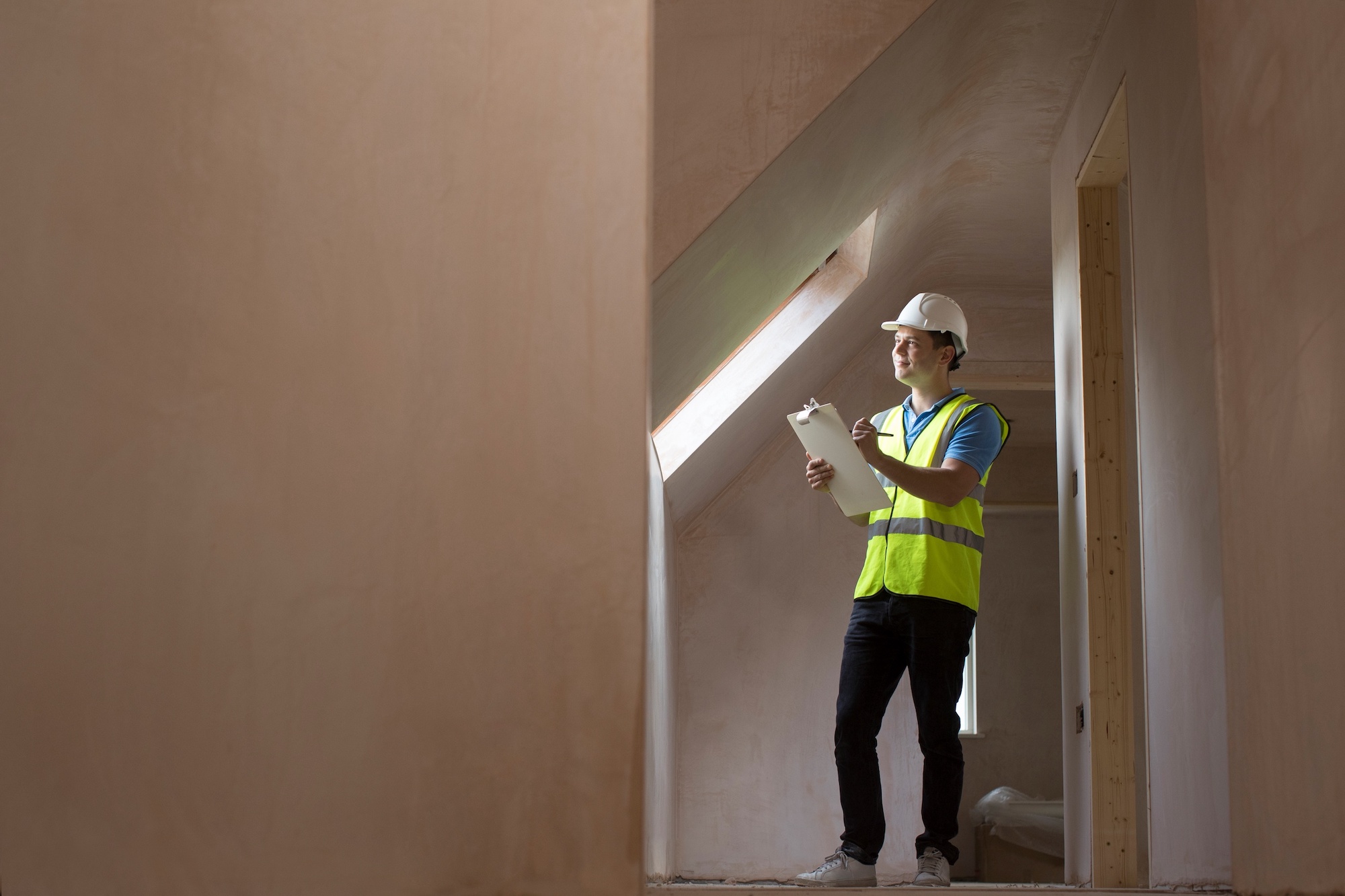
So your offer on that dream home you want just got accepted. Congratulations! Now comes the not-quite-so-fun part… the home inspection.
If you have a good realtor, they should walk you through when and how to set up an inspection. But if you don’t, then you should know that a buyer’s home inspection takes place after the seller accepts your offer and before you close on the home.
Why You Need a Home Inspection Before Closing
Believe me, you don’t want to close on a home before getting it inspected! Houses may seem nearly perfect on the outside, but a home inspector knows how to look for trouble spots that can cause you problems down the road.
The main thing a good home inspector looks for is any safety hazard. They search for defects as well as anything that might need to be replaced soon. (Think A/C or heating systems, water heaters, big appliances, roofs, etc.)
If the home inspection reveals any problems, you can either back out of the deal or renegotiate the price with the seller. Sometimes the seller is willing to pay for the repairs so you’ll still buy the home, and other times you may split the payment.
Either way, a home inspection is absolutely essential for any homebuyer!
Warning Signs to Watch Out for in a Home Inspection
When the home inspector is done, he or she will take a few days to write up a report for you.
There are several major things you should look out for in that home inspection report. Here are the top 10 warning signs that should make you rethink your contract:
1. Leaky or Damaged Roof
If the roof on your prospective home is damaged or hasn’t been replaced in about 20 years, it may cost you a pretty penny down the road. On average, roof replacements cost between $10,000 and $20,000 if you hire a quality company.
Even seemingly minor things like damaged shingles or a faulty fascia board are causes for concern. If you can, see if the seller is willing to fix those roofing issues before you close on the house.
2. Poor Drainage
Drainage problems mean something isn’t doing its job to divert water away from the house.
The issue could be a sloping yard, a broken gutter or a faulty downspout. Something simple like a gutter is easy to fix, but a sloping yard may require more money to remedy.
Whatever the problem is, make sure you fix it before officially purchasing the home. Drainage problems can damage the house’s foundation, siding, and basement.
3. Foundation Problems
Drainage issues aren’t the only thing that can harm a house’s foundation. Keep an eye out for uneven floors, cracks around the doors and windows, or bouncing floors.
These foundation issues can cost thousands of dollars to correct.
4. Plumbing Issues
Did your home inspector find any major plumbing problems? Keep in mind that faulty plumbing can cause water damage in the walls without you even knowing it. And replumbing a house usually costs several thousand dollars.
5. Insect or Animal Infestations
Invaders like cockroaches and rodents are a pain to get rid of, but you need to especially beware of wood-eating pests like termites. These can cause extensive damage to a home—and all where you can’t see them.
If you’re buying a wood-frame house (or a home with a wooden porch), consider hiring an inspector that specializes in termite infestations to take a look.
6. Mold
Smell something musty? Make sure you figure out what it is. Mold isn’t something to take lightly as it can cause health issues and allergies.
If the inspector finds black mold, we recommend seriously reconsidering purchasing the home. Not only is black mold hazardous, but it’s also extremely difficult and expensive to get rid of (think $1,000 to $6,000).
7. Faulty Heating System
A malfunctioning furnace is a fire hazard, so don’t let this problem slip by in the inspection.
Heating problems are usually a result of a lack of proper maintenance, clogged filters, an overrun heat pump, a faulty thermostat, or issues with the ductwork.
8. Dangerous Electrical Wiring
Your inspector should keep an eye out for exposed wires and faulty electrical wiring. These are a safety hazard and, again, can cost thousands of dollars to fix.
Are you seeing a pattern here yet? The more dangerous the problem, the more expensive it usually is to fix.
9. Structural Damage
A faulty structure means the home could be in danger of collapsing.
Watch out for sagging joists, rafters, and door jambs. These can be warning signs for bigger issues in the house’s structure. Your inspector should check the home’s walls, especially load-bearing walls, for any random cracks or bowing tendencies.
10. Deferred Maintenance
If past or current homeowners haven’t been taking proper care of the house, then there may be many more issues that you and the inspector can’t find at first glance.
Find out what steps previous homeowners took to maintain the house and fix issues.
Did You Pass the Home Inspection?
If so, that’s great! You’re on to the next step toward your dream home.
Not quite there yet? That’s OK, our team at Jessica Foote & Associates would be happy to help you get there.


